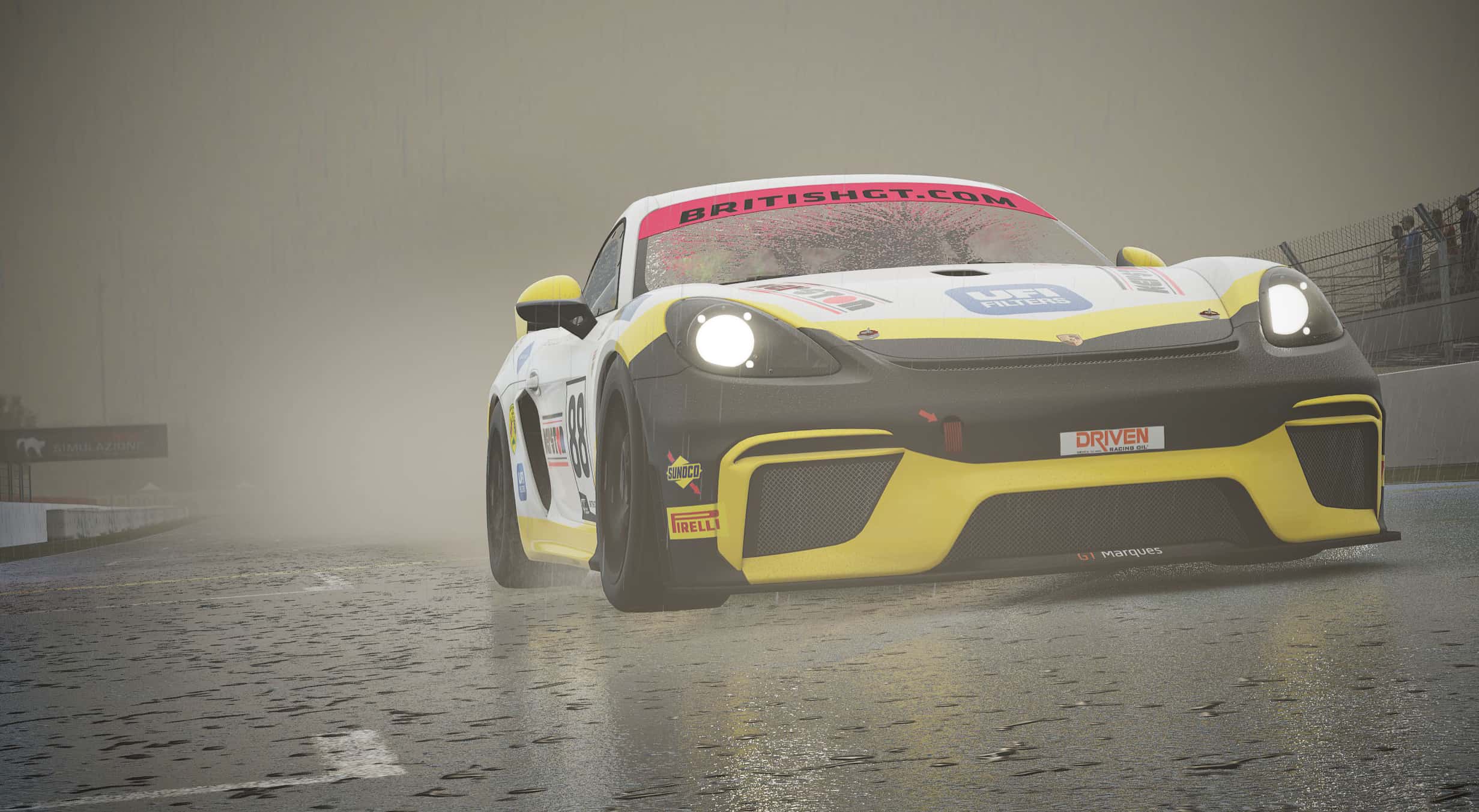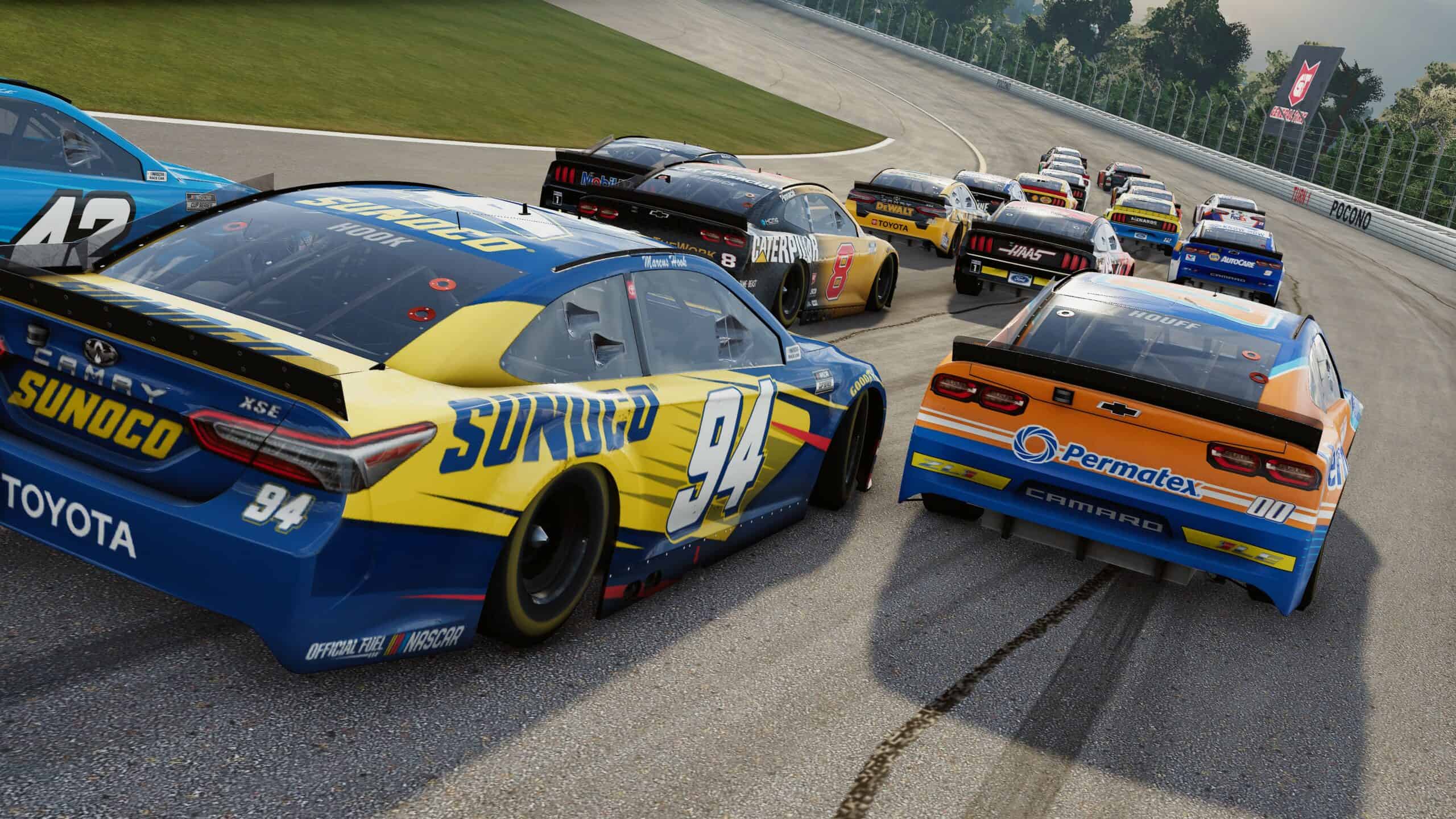Senna; Donington Park 1993. Schumacher; Barcelona 1996. Jackie Stewart on the Nordschleife in 1968. These three are examples of a driver surpassing the abilities of their car to dominate the opposition in wet weather.
Schumacher was a whole second off the Williams cars in qualifying but dominated the race in his trademark ruthless fashion. Senna was at his mercurial best in the European Grand Prix, scything his way into a lead he would not relinquish.
While Stewart used his smooth and calculated style to steer his Matra into a lead of over 4 minutes; this on the most dangerous racing track on the F1 calendar. All these performances had one thing in common; the protagonists weren’t in the fastest car.
It’s generally believed that wet weather is the great leveller in motorsport, with the fastest cars not being able to capitalise on their outright speed. It’s the driver that makes the difference.
But if you don’t have the wet-weather skills of a Senna or Schumacher, what techniques and setups tricks can you employ to make you quicker in the wet in Assetto Corsa Competizione (ACC)?
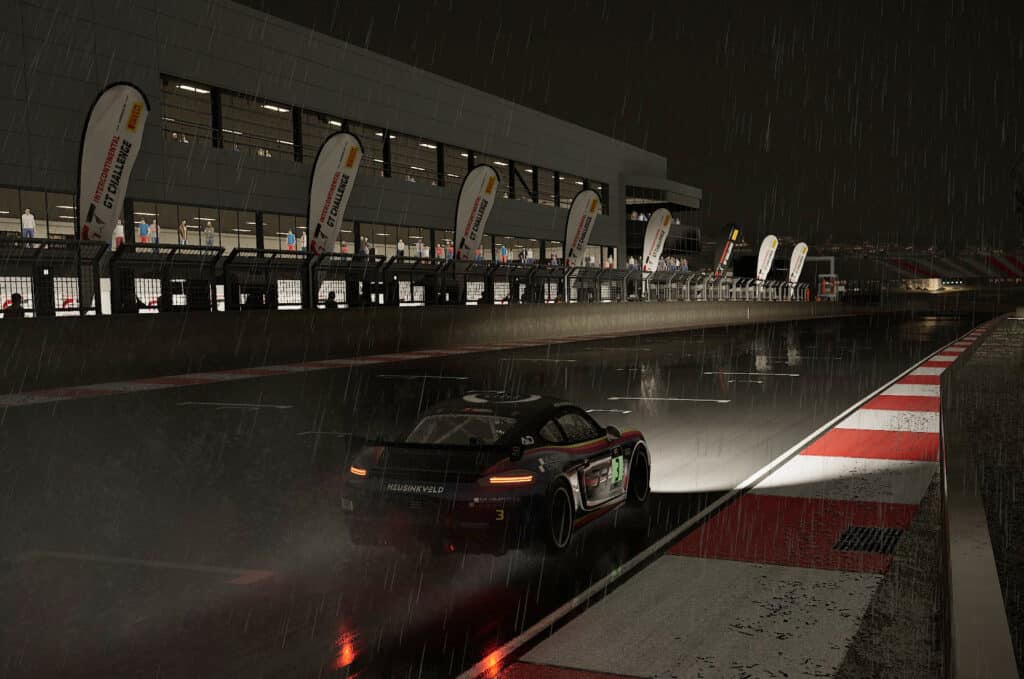
Every Cloud has a Cloudy Lining
ACC features dynamic weather. From simulating light drizzle that causes a greasy track; to full-on thunderstorms flooding the circuit and washing away the hopes and dreams of GT3 drivers everywhere.
In terms of tyre choice, wet weather tyres should be used when the track condition is ‘wet’ or ‘flooded’. When the track is ‘green’, ‘fast’, ‘optimum’, ‘greasy’ or ‘damp’, then using a dry setup with dry tyres is still optimal. If the rain is getting heavier and the track is damp, it’s a safe bet that wet tyres will be required soon, and a wet setup will be worth bolting on – unless of course, you’re mid-race.
Naturally, tyre pressures play a key role in extracting performance from your car in changeable conditions, and keeping them in the wet tyre pressure sweet spot of 29.5-31.0 PSI is crucial.
Unfortunately, the best way to prepare the optimum cold pressures for the various stages of wet weather driving is to practice in these conditions beforehand. If you don’t have time to prepare, then try your dry pressures on wet tyres. This is a decent starting point to work from.
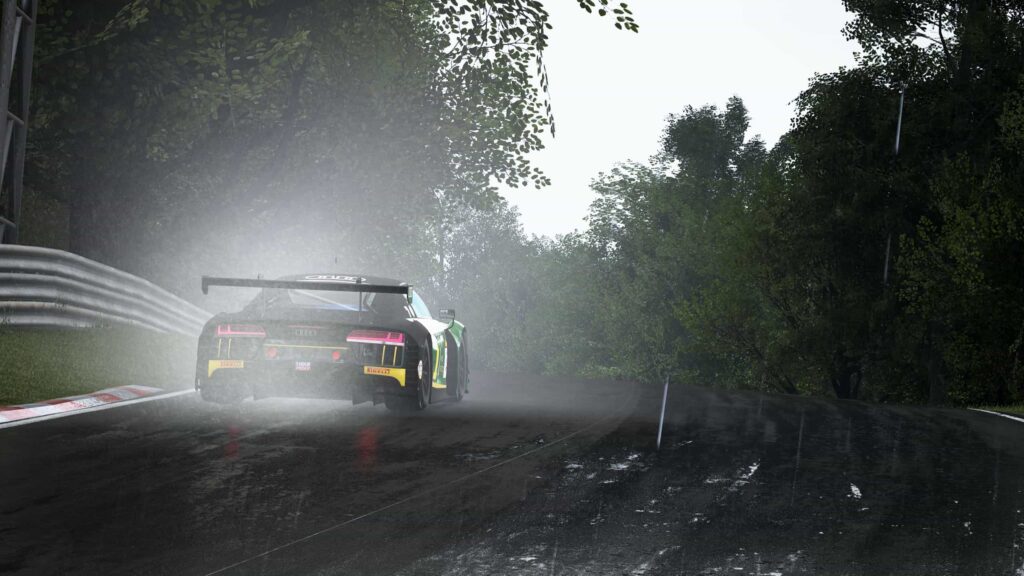
Assetto Corsa Competizione Wet Setup Tips
When the track is sodden, and the rain doesn’t let up, it’s time to run a bespoke wet setup. Other than tyre pressures, you’re going to need to adjust the car so that it remains stable and doesn’t aquaplane through puddles.
Raising the ride height will help prevent aquaplaning, and giving your car a more rearward-biased aerodynamic platform will ensure medium-to-high speed stability.
One of the most important setup changes in terms of pure lap time is reducing the negative camber on the wheels. Essentially, this helps the tyre ‘stand up’, maximising the tyre tread area on the track, increasing grip and traction. Brake ducts can also be closed up: inclement weather reduces ambient and track temperatures, so narrowing the brake ducts will help maintain tyre and brake temperatures, and consequently pressures.
Brake pad material also makes a difference; with ‘Pad 3’ considered ideal for wet weather due to its ability to work well in lower temperatures. Pads 1 and 2 don’t work quite so well in the rain, but for mixed conditions ‘Pad 2’ will be the best option.
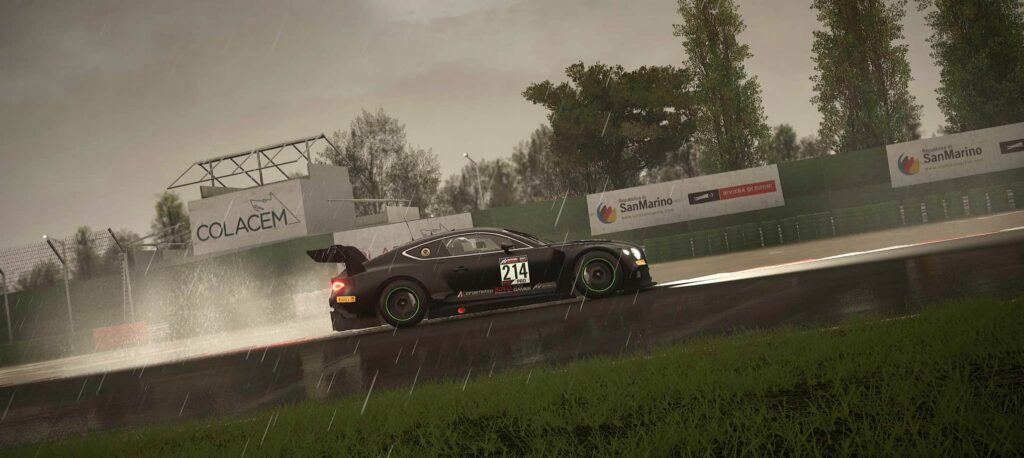
The Road Map to Success
Every car in ACC has a range of wet and dry ECU engine maps. These change the way the car transfers power to the driving wheels and how much fuel is used.
For example, on the McLaren 720S GT3, the most aggressive and most fuel-hungry ECU map is ‘Map 1’. This is for normal, dry, running where maximum power is required and is the optimal way to run – unless fuel-saving is required.
There are also engine maps for wet-weather running (maps 8-12 on the McLaren), and these offer a more user-friendly experience in terms of throttle application, helping to eliminate wheelspin. Increasing the Anti-Lock Brake (ABS) and Traction Control (TC) levels will also help prevent wheel locking and wheelspin, but the popular opinion among ACC racers is that you can keep these at close to dry levels (3-3 on the McLaren generally).
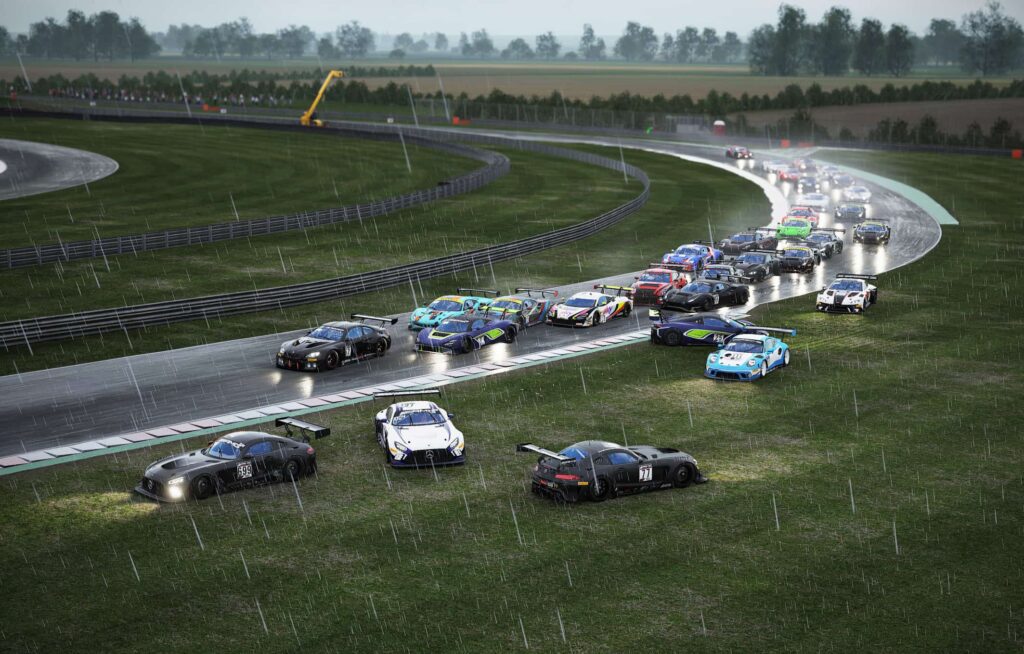
Assetto Corsa Competizione Wet Driving Tips
There’s a little trick with engine maps that can help in the wet, as you can assign buttons on your steering wheel to instantly change engine maps. Using the Bentley for example, you could enter a series of slow turns and switch to map 5 (a wet map), and after exiting cleanly switch to map 1 (maximum power dry map). This gives the best of both worlds- excellent traction and driveability in the turns, and maximum power and acceleration on the straights.
Another important wet driving tip is to avoid braking and accelerating on kerbs! This might seem an obvious pointer for motorsport fans, but it’s vital to prevent time-sapping oversteer. However, coasting over the kerbs works extremely well and is highly recommended in the wet.
Although the developers of ACC claim that they have implemented wet lines – the phenomenon of the dry racing line becoming extra-slippy when wet – it’s still the case that following the normal racing line works best. Hopefully, in the future, this will be addressed creating a much more interesting simulation experience. That being said, steps have been made in recent updates, increasing the grip slightly off-line.
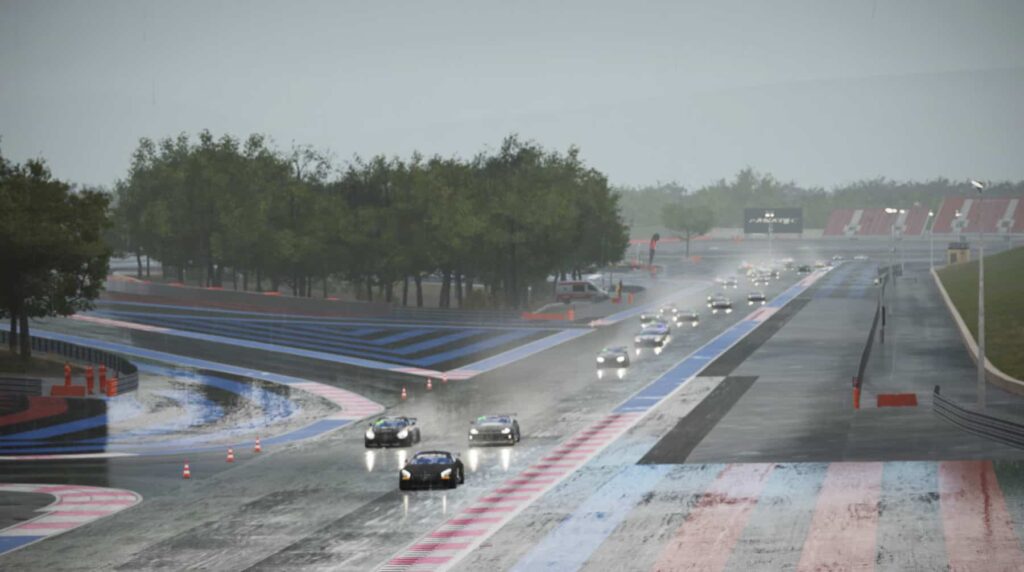
Slip-Sliding Away…
Although driving talent will always shine through no matter the weather, following a few simple steps will give you the best chance of keeping on the pace of the fastest ACC drivers.
As always, the hours spent behind the wheel practising in the wet weather will reap the biggest gains, but making sure your wet tyre pressures and basic setup are stable will inspire confidence from the outset. Although you might not end up with a Senna, Schumacher or Stewart-style performance, at the very least following some of the tips above will prevent the kind of disastrous race Taki Inoue would be proud of.
















